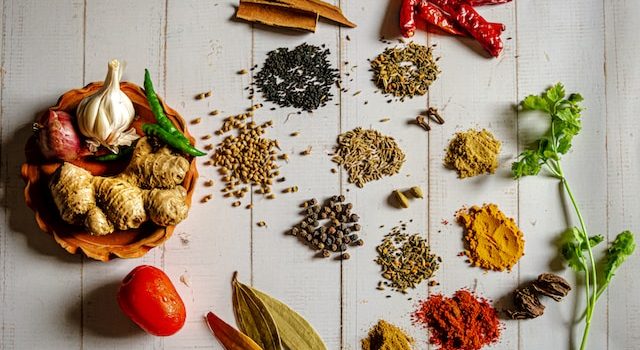
The history of spices is as old as civilization itself. For centuries, spices have played a vital role in shaping cultures, fueling trade routes, and enhancing the flavors of cuisines around the world. Today, we find ourselves in the midst of a spice route revival, as chefs, food enthusiasts, and culinary explorers rediscover the magic and allure of ancient flavors in modern foods. In this article, we will delve into the rich tapestry of spices, their historical significance, and how they are making a resurgence in contemporary gastronomy.
A Journey Through Time:
The spice trade routes of the past were vast and intricate, connecting the East and the West and facilitating the exchange of goods, ideas, and cultures. Spices like cinnamon, cardamom, cloves, and nutmeg were highly prized and sought after for their exotic flavors and medicinal properties. These valuable commodities not only transformed the culinary landscape but also had a profound impact on global economies and civilizations.
Reviving Ancient Flavors:
In recent years, there has been a resurgence of interest in ancient flavors and traditional spice blends. Chefs and food enthusiasts are embracing the diversity and complexity of spices, incorporating them into modern dishes to create unique and innovative flavor profiles. By rediscovering and reviving these ancient flavors, they pay homage to culinary traditions while pushing the boundaries of creativity.
Beyond Taste: Health and Wellness Benefits:
Spices not only add depth and complexity to dishes but also offer numerous health and wellness benefits. Many spices possess antioxidant, anti-inflammatory, and antimicrobial properties, making them valuable additions to a balanced diet. Turmeric, for example, with its active compound curcumin, has gained attention for its potential anti-inflammatory properties and has been used for centuries in traditional medicine. Ginger is another spice known for its digestive benefits and soothing properties. By incorporating these ancient flavors into our meals, we not only tantalize our taste buds but also support our overall well-being.
A Culinary Adventure:
Embracing the spice route revival is like embarking on a culinary adventure. It involves exploring the origins and stories behind each spice, experimenting with new flavor combinations, and celebrating the diversity of global cuisines. From Moroccan ras el hanout to Indian garam masala, from Ethiopian berbere to Mexican mole, each spice blend carries a unique cultural identity and a story to tell. By incorporating these flavors into our cooking, we honor the heritage and traditions of the past while creating new culinary experiences.
Embracing Sustainability:
As we rediscover ancient flavors, it is important to embrace sustainability and support responsible sourcing practices. Many spices are cultivated in specific regions, and their production can have social, economic, and environmental implications. By choosing ethically sourced and sustainably produced spices, we contribute to the preservation of biodiversity, protect farmers’ livelihoods, and promote fair trade practices.
Inspiring Home Cooks:
The spice route revival is not limited to professional kitchens. Home cooks are also embracing the flavors and versatility of spices, transforming everyday meals into extraordinary culinary experiences. Whether it’s a pinch of saffron in a paella, a dash of sumac on a salad, or a sprinkle of za’atar on roasted vegetables, spices have the power to elevate home-cooked dishes and infuse them with a touch of exoticism and intrigue.
Conclusion:
The spice route revival is a celebration of flavors, cultures, and the culinary traditions of our ancestors. It is an invitation to embark on a sensory journey, exploring the vibrant and enchanting world of spices. By rediscovering ancient flavors, we connect with our collective history and enrich our culinary experiences.










